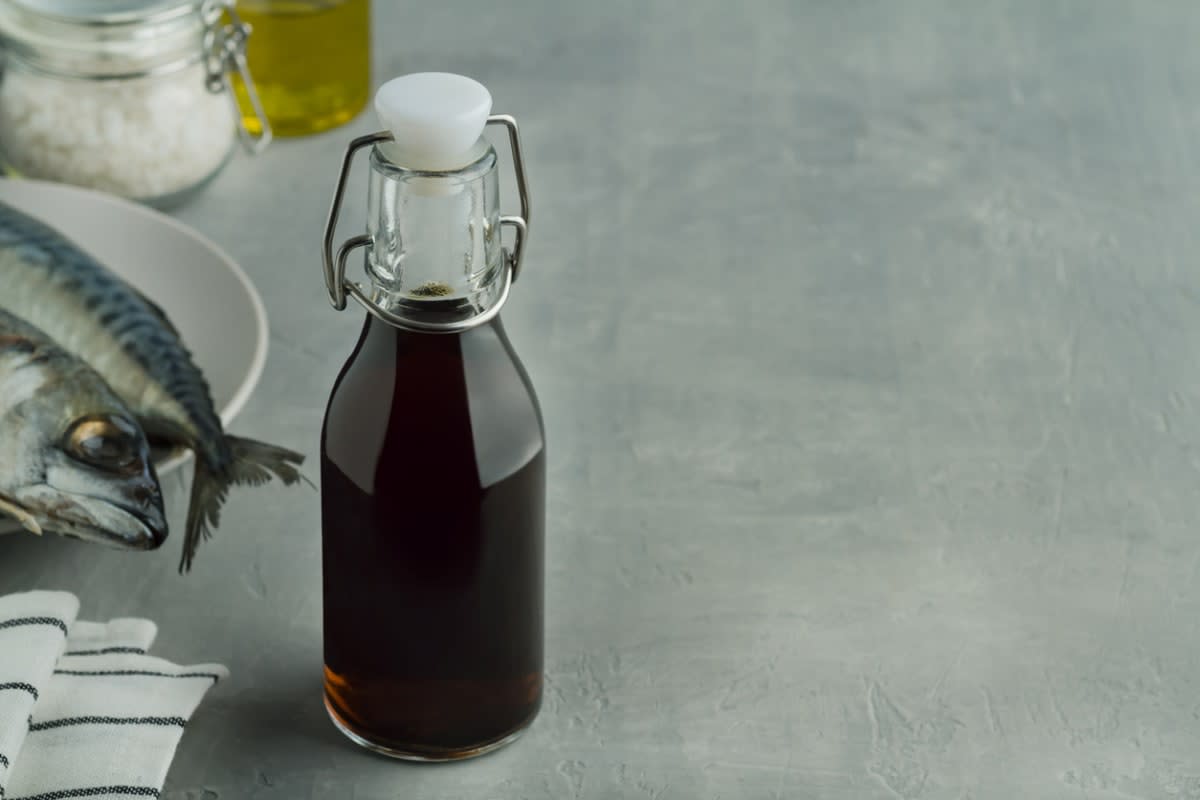Not a Fan of Fish Sauce? Here Are 7 Excellent Substitutes

There are so many yummy sauces that can take any meal from boring to extraordinary–and one of the best is fish sauce.
“Fish sauce is from fish or krill that has been salted and then fermented. It is typically used in cooking or marinades,” explains registered dietitian Jonathan Valdez, RDN, owner of Genki Nutrition and a spokesperson for the New York State Academy of Nutrition and Dietetics. “It has a pungent smell with a caramel-y color—or it can be a little darker, closer to soy sauce.”
While it’s commonly used in Asian dishes, it adds flavor–especially salt—to lots of food.
“Fish sauce is used to flavor seafood or other dishes (yes, if you enjoy the flavor of fish sauce you can use it in tofu or plant-oriented dishes),” says Bonnie Taub-Dix, RDN, creator of BetterThanDieting.com and author of Read It Before You Eat It: Taking You from Label to Table. “Don’t let the name fool you—fish sauce or any of its substitutes do not limit you to including it in only fish dishes.”
However, you may need to substitute it due to food allergies, dietary restrictions (like those who are vegetarian or vegan), those watching their sodium content, as well as availability issues.
“Although fish sauce barely adds any calories (only 10 calories per tablespoon), that same amount will bring you a whopping 1,480 mg of sodium,” adds Taub-Dix.
The 2020-2025 Dietary Guidelines for Americans recommend you consume less than 2,300 mg of sodium per day.
Looking for the best fish sauce substitutes? Here are seven to try.
Best Fish Sauce Substitutes
1. Soy sauce
Taub-Dix notes that like fish sauce, soy sauce will bring plenty of salty flavor. However, it is very high in sodium, averaging 900 mg per tablespoon.
“Although a lower sodium soy sauce contains much less sodium than conventional types, for a product to be called ‘low sodium’, it needs to contain 140 mg sodium or less per serving. If a serving is a tablespoon, then even ‘low sodium’ soy sauce is not low!” adds Taub-Dix.
Related: What's the Best Soy Sauce Substitute? Here are 10 Solid Options to Try
2. Worcestershire sauce
“Since Worcestershire sauce is made of anchovies, molasses, tamarind, vinegar, cloves, onion and other seasonings, it can be similar with lower sodium,” says Valdez.
3. Vegan soy sauce
“[Vegan] soy sauce has an umami flavor with a different taste than fish sauce,” says Valdez. “If you get the low sodium one, this can be an alternative for fish sauce.”
Related: 13 Best Oyster Sauce Substitutions
4. Balsamic glaze or balsamic vinegar
"You might be surprised to hear this, but I like to add a squeeze of balsamic glaze or a rich balsamic vinegar to my fish or tofu dishes,” says Taub-Dix. “It adds a mouthful of flavor while providing a measly 4 mg of sodium, thousands less than most soy, fish sauce or tamari sauce products.” (Here is Taub-Dix’s balsamic glaze recipe.)
5. Anchovies
“Since anchovies are similar in taste to fish sauce (and they are actual fish!), you can use anchovies as fish sauce,” says Valdez.
6. Soy sauce + rice vinegar
“The benefit of this is that the rice vinegar reduces the sodium content of the soy sauce,” says Taub-Dix. “You can make this even better by using low sodium soy sauce, weighing in at about 600 mg of sodium (not a small amount — especially if you’re heavy-handed). Yet, it’s still better than the conventional soy sauce that brings 900 mg sodium per tablespoon.”
Related: What Is Coconut Aminos? Why Nutritionists Love It
7. Coconut aminos
“Just like the vegan soy sauce, it has an umami flavor,” says Valdez. “It won't taste just like fish sauce, but it's an alternative with 1-1 ratio for recipes and is lower in sodium.”
Sources
Bonnie Taub-Dix, RDN, creator of BetterThanDieting.com and author of Read It Before You Eat It: Taking You from Label to Table
Jonathan Valdez, RDN, owner of Genki Nutrition and a spokesperson for the New York State Academy of Nutrition and Dietetics.

